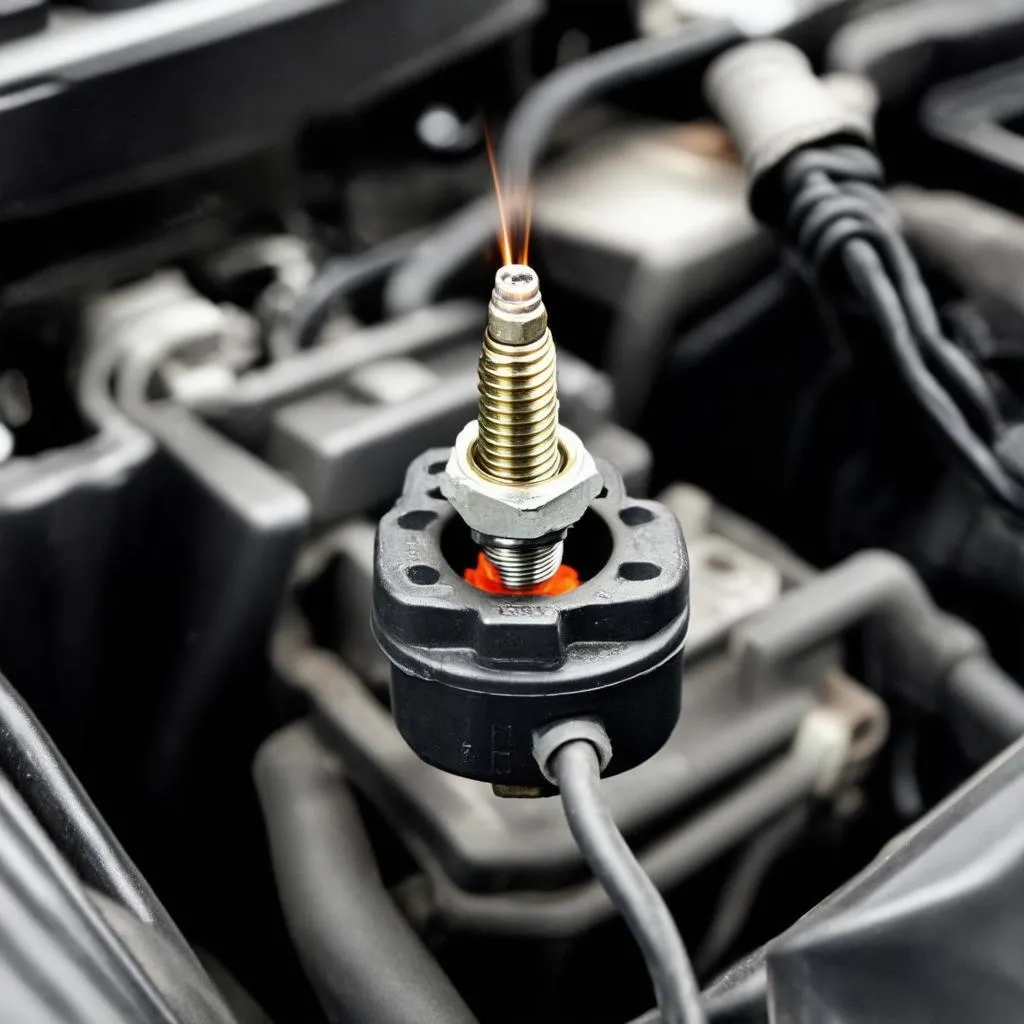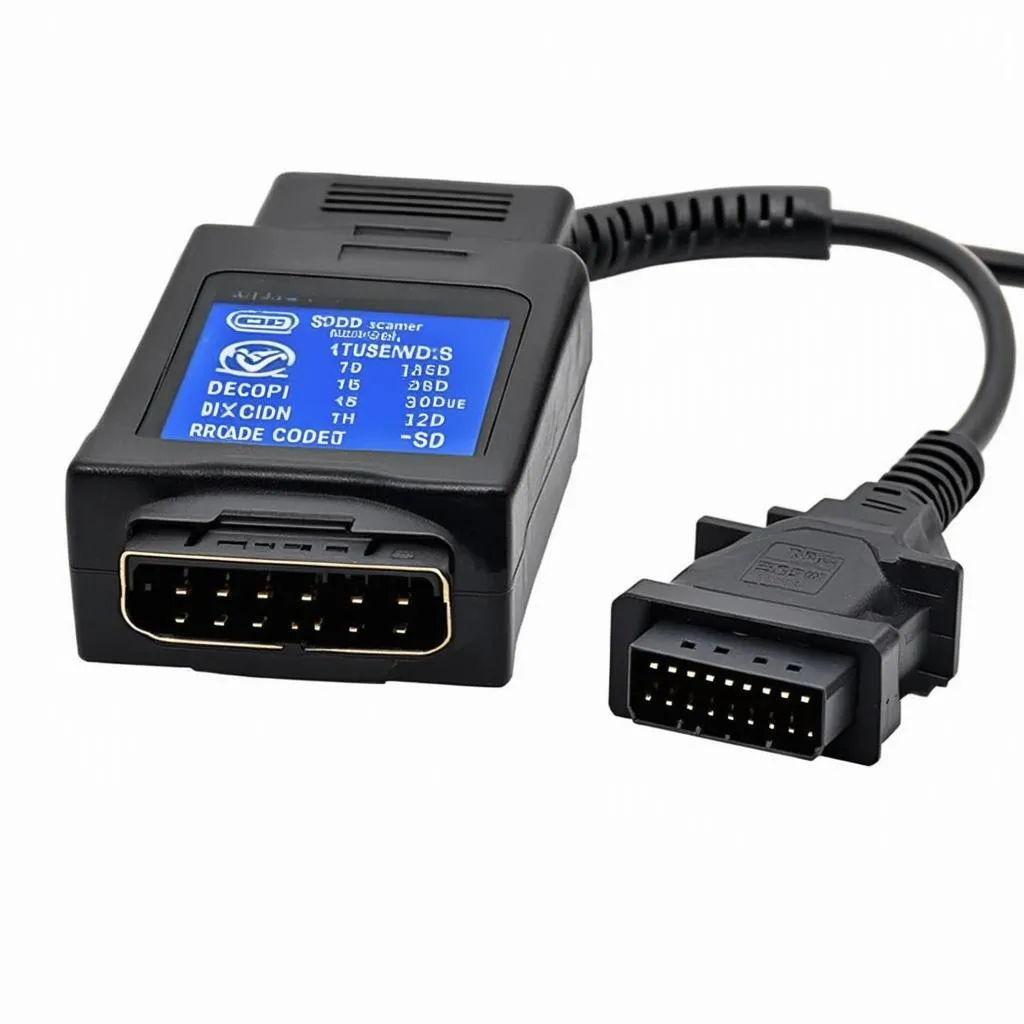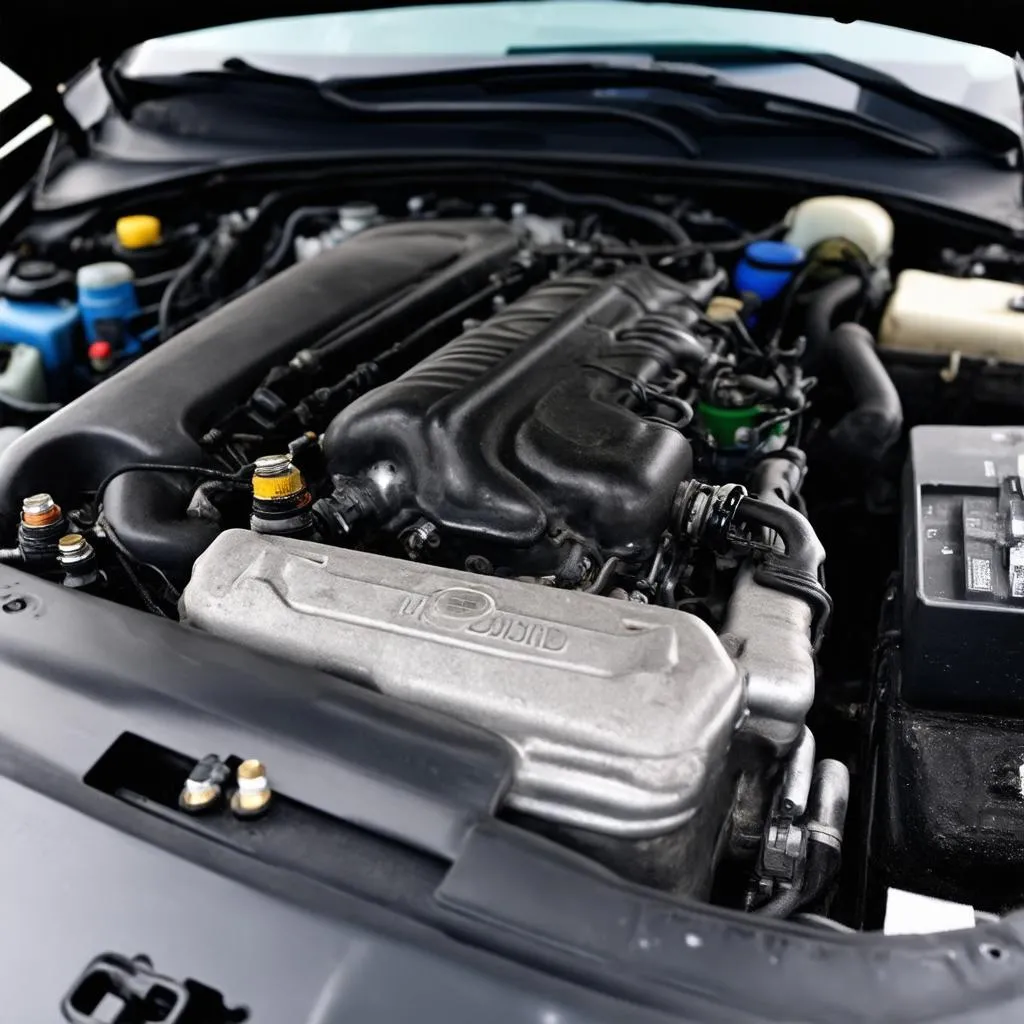“A stitch in time saves nine.” This old saying holds true when it comes to your car’s health. Recognizing warning signs and acting promptly can save you from bigger headaches and costly repairs down the line. One such warning sign is the dreaded OBD code P0300, which indicates a random misfire detected in your engine.
Let’s delve into the world of misfire codes, uncovering what P0300 signifies, why it pops up, and how you can effectively tackle the issue.
Understanding P0300: What Does It Mean?
The P0300 code is thrown when your car’s onboard diagnostic system (OBD) senses a random misfire in one or more cylinders. Essentially, this means the engine isn’t firing consistently, causing a less than smooth operation.
Think of your engine as a symphony orchestra. Each cylinder is an instrument, and they need to play together harmoniously to create a beautiful melody. The P0300 code indicates that one or more of these instruments is playing out of tune, disrupting the overall performance.
Why Does P0300 Appear?
Several reasons can lead to a P0300 code, ranging from minor issues to more serious problems. Here are some of the most common culprits:
1. Spark Plugs and Ignition System:
Spark plugs are the igniters of the combustion process, setting off the fire in each cylinder. Worn-out or fouled spark plugs can hinder this crucial step, leading to misfires.
- Story Time: Imagine your spark plug is a match. If it’s damp or old, it might not light the fire in the cylinder, causing a misfire.
A faulty ignition coil can also be the culprit. The coil delivers the necessary electrical spark to the spark plug. Think of the coil as the power source for your match. If the coil is weak or faulty, the spark will be too weak to ignite the fire.
2. Fuel Delivery System:
The fuel injectors are responsible for delivering the correct amount of fuel into each cylinder. If the injectors are clogged or malfunctioning, the mixture of air and fuel will be off, causing a misfire.
- Story Time: Imagine the fuel injector is like a water sprinkler. If it’s clogged, it won’t spray the right amount of water onto the plants (your engine).
Issues with the fuel pump or fuel filter can also impact fuel delivery. A malfunctioning fuel pump might not deliver enough fuel, while a clogged filter might hinder the flow of fuel to the injectors.
3. Air Intake System:
A leak in the intake manifold or air intake system can cause a lean air-fuel mixture, resulting in misfires.
- Story Time: Imagine the intake manifold is like a pipe delivering air to your engine. If the pipe has a hole, the air won’t flow properly, causing the mixture to be off.
4. Engine Sensors:
Several sensors work in conjunction to ensure the engine runs smoothly. A faulty sensor, such as the oxygen sensor, mass airflow sensor, or crankshaft position sensor, can disrupt the engine’s performance and lead to misfires.
- Story Time: Imagine each sensor is like a musician in the orchestra. If one of the musicians plays the wrong note, it will affect the entire performance.
How to Resolve P0300
Addressing P0300 requires a systematic approach. Here’s a breakdown of the steps you can take:
1. Diagnose the Problem:
Before jumping into repairs, it’s crucial to pinpoint the root cause of the P0300 code. A qualified technician with a diagnostic scanner can help identify the specific cylinder experiencing the misfire and provide further insight into the underlying issue.
- Expert Testimony: “It’s important to diagnose the problem correctly before you start throwing parts at it,” says Dr. Mark Johnson, a renowned automotive expert.
2. Fix the Issue:
Once the culprit is identified, the appropriate repair can be performed.
- Replace Worn-Out Parts: If the spark plugs, ignition coils, or fuel injectors are found to be faulty, they need to be replaced.
- Clean or Replace Filters: Cleaning or replacing clogged air filters, fuel filters, and even the fuel injectors themselves can restore proper fuel delivery.
- Repair Leaks: Leaks in the intake manifold or air intake system should be repaired to ensure a proper air-fuel mixture.
- Replace Faulty Sensors: If a sensor is malfunctioning, it needs to be replaced.
3. Reset the Check Engine Light:
After addressing the issue, the check engine light needs to be reset. This can typically be done with a diagnostic scanner.
- Expert Testimony: “A good rule of thumb is to always reset the check engine light after repairs to ensure the problem is truly resolved,” says Dr. Johnson.
P0300 FAQs:
-
Q: Can I drive my car with the P0300 code?
- A: While driving with a P0300 code is not ideal, it’s usually safe in the short term. However, ignoring the issue can lead to further damage and more costly repairs. If you notice a loss of power, rough idling, or other significant symptoms, it’s best to avoid driving your car and get it diagnosed as soon as possible.
-
Q: Can I fix the P0300 code myself?
- A: Simple repairs, such as replacing spark plugs, can sometimes be done by a DIYer with basic automotive knowledge. However, more complex issues, such as faulty sensors or fuel injector cleaning, might require professional assistance.
-
Q: How do I prevent P0300 from occurring in the future?
- A: Regular maintenance is key to preventing misfires. Follow your car’s recommended maintenance schedule, including spark plug replacement, air filter changes, and fuel filter replacement.
-
Q: How much does it cost to fix the P0300 code?
- A: The cost of fixing a P0300 code can vary greatly depending on the cause and complexity of the repair. Simple repairs, such as replacing spark plugs, can be relatively inexpensive. However, more complex issues, such as replacing fuel injectors or repairing a leak in the intake manifold, can be more costly.
-
Q: What are some other common OBD codes related to misfires?
- A: Other common OBD codes related to misfires include P0301, P0302, P0303, and so on, where the last two digits indicate the specific cylinder experiencing the misfire.
Related Articles
- Causes of OBD Code P0300 Trailblazer 4.2L
- Chevy Silverado OBD Code P0300
- 2004 Nissan Xterra P0300 OBD Codes
- Cause of OBD Code P0300
- Ford OBD Codes P0300
Conclusion
The P0300 code is a common problem that can be tackled with the right approach. By understanding the possible causes and taking appropriate steps, you can get your engine running smoothly again. Remember, maintaining your car regularly and addressing any issues promptly can save you from bigger headaches and costly repairs in the future.
If you’re experiencing a P0300 code and need help diagnosing or fixing the issue, reach out to our team of expert technicians at [Whatsapp: +84767531508] for 24/7 support. We’re here to help get your car back on the road in no time!
 Spark Plug P0300
Spark Plug P0300
 P0300 Code Scanner
P0300 Code Scanner
 Misfire Engine Check Light
Misfire Engine Check Light